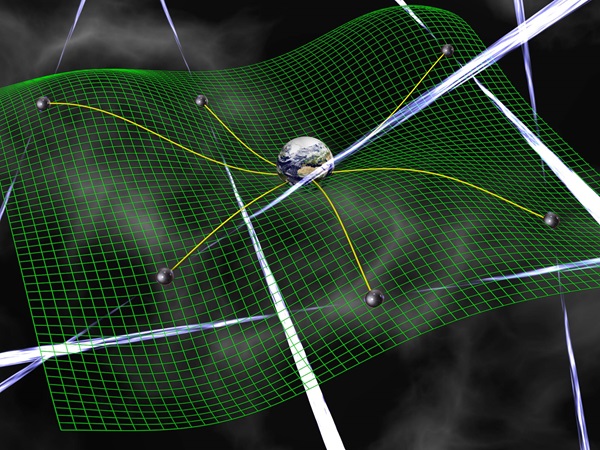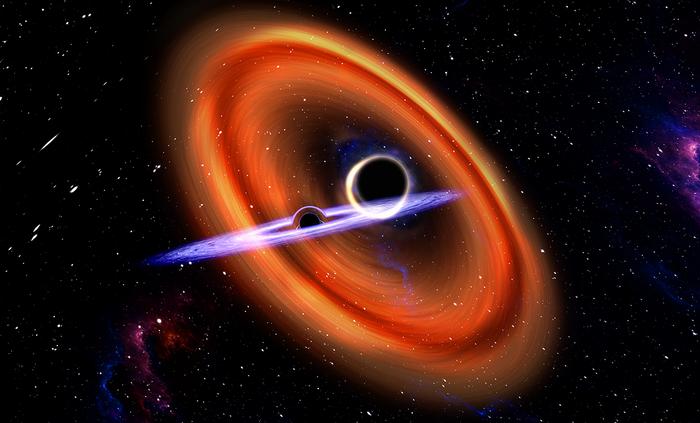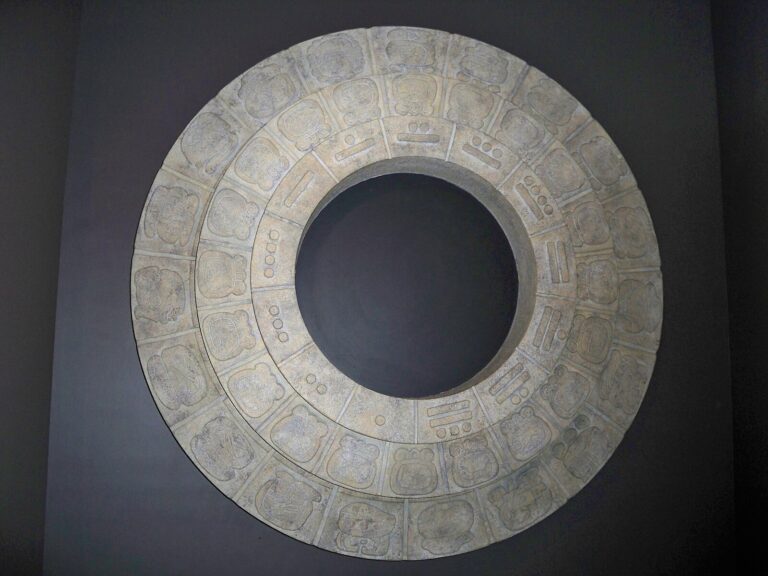Key Takeaways:
NANOGrav, a collaboration of over 60 scientists at more than a dozen institutions in the United States and Canada, is ferreting out the lower-frequency (weaker) gravitational waves that characterize the earlier stages of these orbiting systems. “We’re looking for objects that aren’t merging yet,” says Scott Ransom, National Radio Astronomy Observatory (NRAO) scientist and NANOGrav team member. “In fact, we’re looking for them thousands, tens of thousands, or even hundreds of thousands of years before they merge.” And, because these wavelengths are so long, the time to detect and measure them can be painfully drawn out. “At the fastest end,” he says, “gravitational wave periods can be something like once every few months. At the long end, they could be once over, maybe, ten years. That’s the nanohertz frequency regime, and that’s why we’re NANOGrav.”
The NANOGrav detection system is based on pulsar signal timing. Pulsars emit beams of radio waves that sweep across Earth as they rotate. Because some pulsars rotate at millisecond rates, they can function as precision time standards for astronomical measurements. Three pulsar timing arrays operate around the world to establish databases of these signals including NANOGrav, the European Pulsar Timing Array and the Parkes (Australia) Pulsar Timing Array. Together, they belong to a science consortium, the International Pulsar Timing Array (IPTA), which works to share data among groups. “A PTA is just an array that we can use to look for correlations among the pulsars for different types of science,” says Maura McLaughlin, Professor of Physics and Astronomy at West Virginia University and NANOGrav Chair. “NANOGrav is a specific project where we’re using the PTA to search for gravitational waves.”
NANOGrav uses pulsar timing observations acquired at the Green Bank Telescope in West Virginia and at Arecibo Radio Observatory in Puerto Rico. New telescopes are coming into the IPTA consortium, however, including FAST (China), MEERKAT (South Africa), and facilities in India.
Although adding pulsars to a timing array’s database increases its sensitivity, NANOGrav scientists first examine and characterize new candidates carefully before they’re included in the network. “We’re timing right now something like 70,” says Ransom, “although our next formal data release will have around 48; we don’t have enough information yet on the more recent ones to put them into our data release. We’re continuing to add about four pulsars per year, which has been more than our goal. We’re really happy with that.”
Changes in the timing of pulsar signals could reveal the passage of gravitational waves: “We’re measuring all of our pulsars at the Earth, which is like one side of a LIGO interferometer,” says Ransom. “Gravitational waves jiggle the Earth by compressing and stretching space-time. If the Earth gets jiggled toward one side of the sky, the pulsar signals from that direction are going to all appear to be a little bit early and the pulsar signals on the other side of the sky are going to appear to be a little bit late.” In other words, shifts in pulsar signal arrival times won’t be identical when they arrive at the Earth because pulsars are distributed across the sky at different distances. They will, however, be correlated, and that’s important for determining that these shifts are due to gravitational waves and not something else.
NANOGrav Animation of Gravitational Waves from NRAO Outreach on Vimeo.
Gravitational waves are quadrupolar – they stretch and squeeze space-time in three directions (the fourth “direction” is time). NANOGrav astronomers will use this property to confirm that any observed shifts are due to gravitational waves and not something else. “If you see wiggles in one pulsar,” says Ransom, “you should see similar, but not identical, wiggles in other pulsars.” The noise in pulsar arrival times —that is, irregularities in the arrival time due to intrinsic properties of the neutron star, such as its spin — should have a “red spectrum,” showing more signal power at very low frequencies. And there are other sources of low-frequency noise, such as effects introduced by passage through the ionized interstellar medium. This is where patience pays off: the longer that pulsars are timed, the more sensitive the array becomes to these low frequencies. Quadrupolar correlation can then be used to disentangle these effects from the noise of gravitational waves.
The NANOGrav measurement approach should be sensitive to all types of orbiting binaries, at all orbital distances. This means that their gravitational waves will add together, and project scientists therefore expect that their first detections will show a sky filled with gravitational waves — a diffuse signal akin to the Cosmic Microwave Background (CMB). “That’s more or less a direction-independent signal and we expect that to be the strongest one,” says Ingrid Stairs, Professor of Astronomy at the University of British Columbia and NANOGrav team member. “It’s basically a superposition of gravitational waves from pairs of coalescing or close-together supermassive black hole binaries scattered all over the universe.”
The search could take a long time. The NANOGrav team has been gathering data for about 13 years. Current analyses that model pulsars and data collection rates project a likely discovery of a diffuse background of gravitational waves in about ten years, although some team members are emphatically more optimistic. Even when it comes, however, the discovery is liable to be both quiet and gradual. “It’s not going to be like LIGO,” says McLaughlin, “where, one day, someone looks at a plot and says, ‘Oh my god, gravitational waves!’ It’s probably going to start off with a paper where we have something like a [modest] significance in our data, and that’s a hint of a gravitational wave. Then a year later with more data, it’s grown to [greater] significance and we’ll be more confident. Finally, a year after that it’s four or five sigma and we’ll call that a detection. It’s going to be slow.”
In the meantime, there’s a lot of good science to be gained from the search. “There’s still tons of stuff that comes out of just the pulsar timing,” says McLaughlin. “There are things like measurement of the mass and velocities of neutron stars, studies of the interstellar medium between us and the pulsars, and tests of general relativity as we study pulsars in these relativistic binaries.”
“You see different objects in each of the electromagnetic bands,” explains Ransom, “and you learn about different objects depending on which electromagnetic window you’re looking for. It’s exactly the same in gravitational wave windows. Right now, you can think of LIGO as like seeing the universe in X-rays. It looks at the highest frequencies of gravitational waves, created by compact objects, neutron stars and stellar mass black holes.
“NANOGrav is like the radio astronomy of gravitational waves. We’re looking the most massive black holes in the universe, completely different objects. They’re at the centers of the biggest galaxies in the universe and we’re hoping to see them when entire galaxies merge.”

Want to dig deeper into gravitational waves and general relativity? We’ve got you covered with our free downloadable eBook: A Century of Gravitational Waves.














